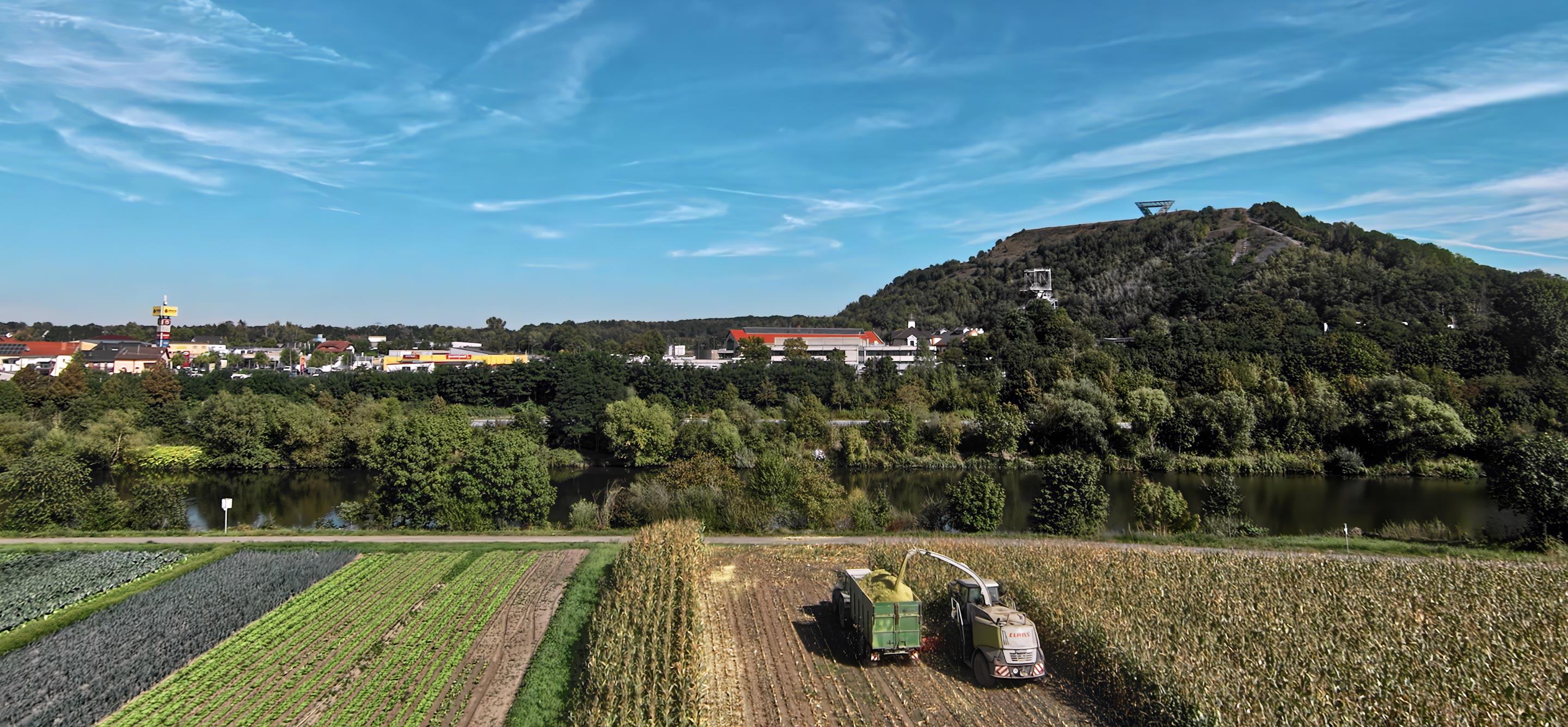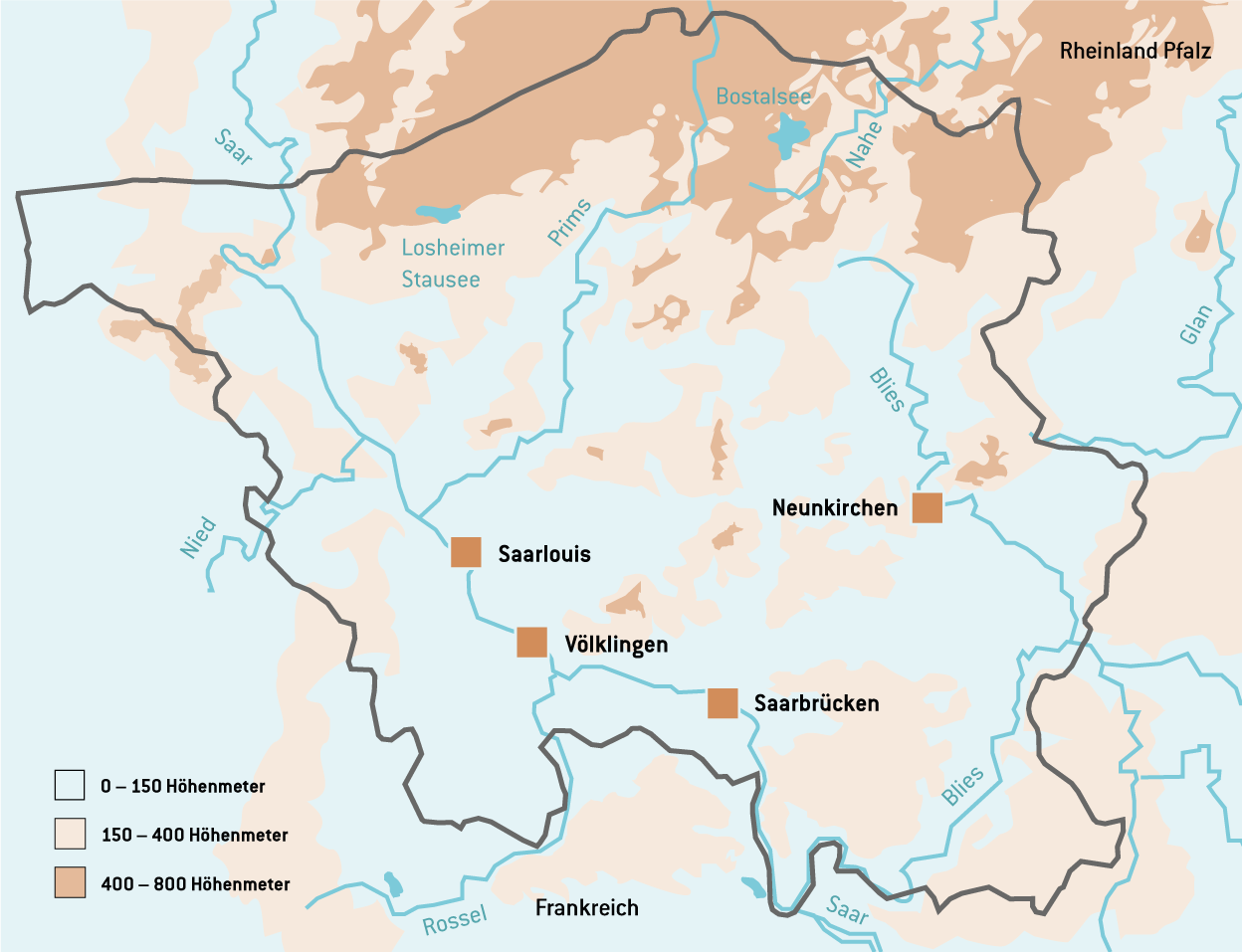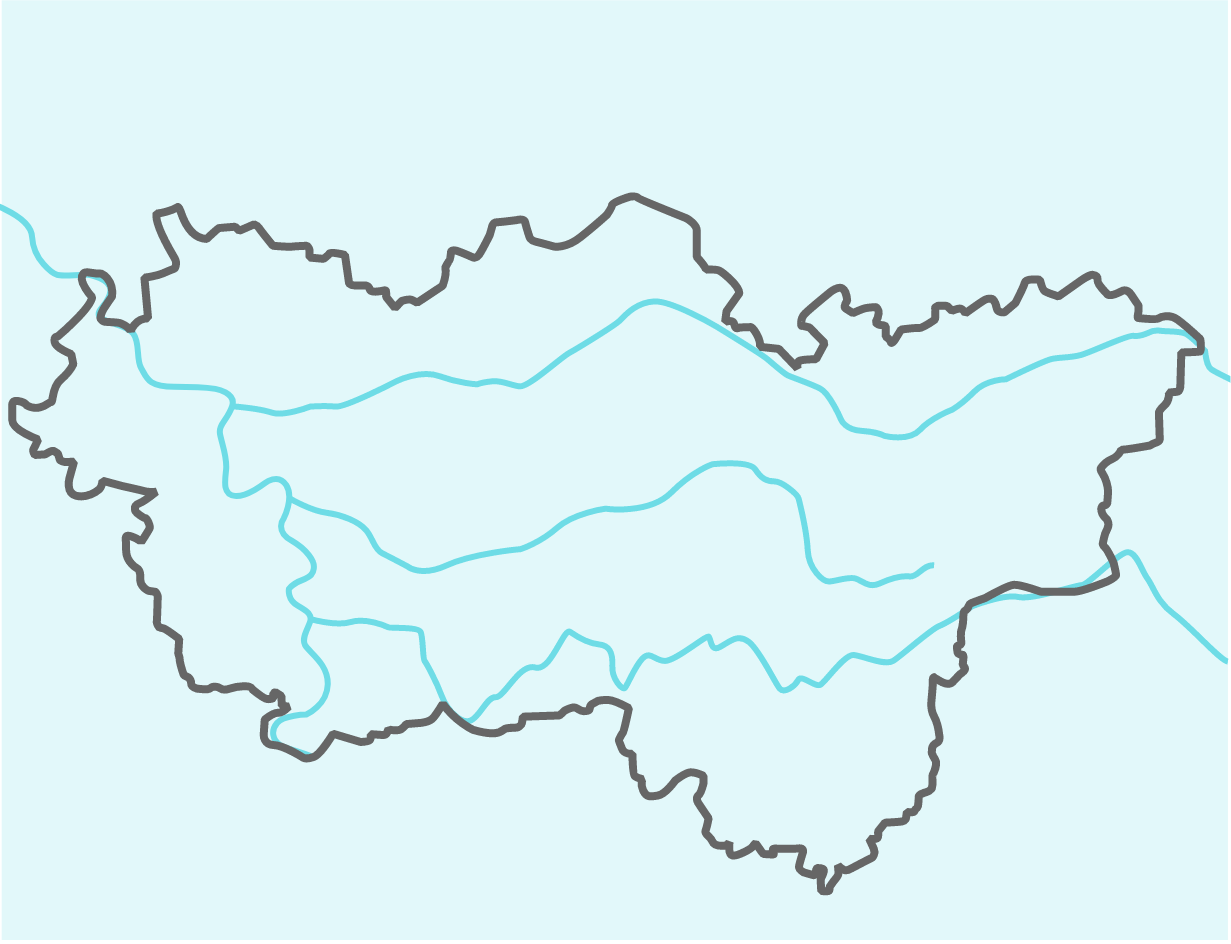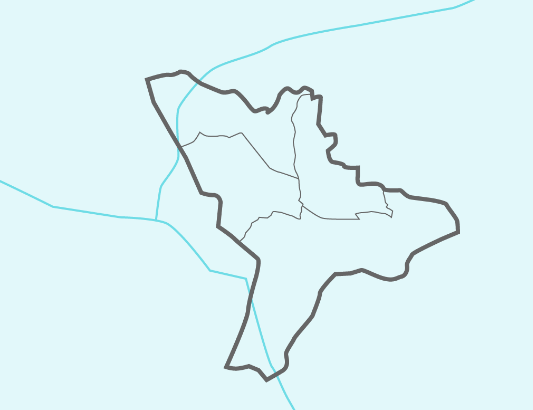
Saarland
The last colliery in Saarland ceased production on 30 June 2012. Yet the end of more than 200 years of mining there did not mean everything was done and dusted. Pit water management is a perpetual obligation in order to protect people and the environment.
Generations to come will need to work on continuously improving the related processes, reducing costs, and preventing possible risks. While the geological conditions along the Saar make it possible to dispense with extensive polder measures, such as those necessary in the Ruhr region, there are still numerous pumps in operation to raise pit water. Pits that are connected to each other underground form what are termed water provinces. There are five of them today in Saarland: Reden, Camphausen, Luisenthal, Viktoria and Duhamel. An average total of around 17 million cubic metres of pit water per annum were raised at these sites over the past ten years – or approximately 540 litres a second.
of pit water a year are raised in Saarland
The energy required to run the powerful pumps at full load is equal to the electricity consumption of around 17,000 households. Back in 2014, RAG Aktiengesellschaft therefore presented a concept to optimise energy-intensive pit water management from an ecological and economic perspective. In 2021, the responsible mining authority approved the operating plan required under mining law and gave the permission required under water law. That was preceded by a planning approval procedure with an environmental impact assessment and public participation, including detailed studies of possible impacts on people, animals, plants, biodiversity, areas, the soil, water, climate and air, the landscape and cultural heritage as well as other material assets.
The core of the planning envisages uniting the previously separate water provinces underground. RAG is setting store by the principle of well water management as part of that: State-of-the-art submersible pumps are lowered into the shafts from above ground, where they are flexibly adjusted to the desired water level. That work will commence at Reden and Duhamel, by far the largest water provinces in Saarland. In a first step, the pumps will be switched off so that the water can rise to a level of 320 metres below sea level in accordance with the official stipulations. As soon as the level in Reden reaches a height of –383 metres, the pit water will flow through a connecting section to Duhamel. After the water levels at both sites have been equalised, they will be jointly raised to the target level of –320 metres. Only then will the pumps at the Duhamel site resume their work. Reden will be retained as a backup site.
This approach means water no longer has to be pumped up from a depth of up to 1,000 metres in a highly energy-intensive manner. Instead, it is now only extracted from a low depth at the Duhamel site in Ensdorf and discharged directly into the Saar. The Klinkenbach and Sinnerbach, the Blies and the Saar itself up to the mouth of the Fischbach will then be completely free of pit water. In addition, the significant reduction in pump operation saves energy and cuts CO2 emissions, thus helping to ensure a much improved ecological footprint. The entire process of controlled raising of the pit water level is strictly monitored by RAG, and the results are continuously shared with the responsible state authorities and municipalities, special-purpose associations and environmental organisations.

In addition to well water management, which is financed by the RAG-Stiftung and is at the heart of its mission, RAG makes other valuable post-mining contributions along the Saar. They include the finite obligations of remediating former sites and developing them so that they can be put to new use, securing and renaturalising slag heaps and ponds, or settling claims due to mining-related damage. This commitment is flanked by the RAG-Stiftung’s obligation to permanently preserve and nurture the cultural heritage of the Saar mining industry, to support education and equal opportunities in the former mining districts and to further develop the state of scientific research in connection with hard coal mining.
Thanks to all of these activities, the RAG-Stiftung and RAG make a lasting contribution to keeping Saarland attractive and liveable for current and future generations.


